Dongliang Fan
Stretchable and High-Precision Optical Tactile Sensor for Trajectory Tracking of Parallel Mechanisms
Dec 24, 2025Abstract:Stretchable sensors indicate promising prospects for soft robotics, medical devices, and human-machine interactions due to the high compliance of soft materials. Discrete sensing strategies, including sensor arrays and distributed sensors, are broadly involved in tactile sensors across versatile applications. However, it remains a challenge to achieve high spatial resolution with self-decoupled capacity and insensitivity to other off-axis stimuli for stretchable tactile sensors. Herein, we develop a stretchable tactile sensor based on the proposed continuous spectral-filtering principle, allowing superhigh resolution for applied stimuli. This proposed sensor enables a high-linear spatial response (0.996) even during stretching and bending, and high continuous spatial (7 μm) and force (5 mN) resolutions with design scalability and interaction robustness to survive piercing and cutting. We further demonstrate the sensors' performance by integrating them into a planar parallel mechanism for precise trajectory tracking (rotational resolution: 0.02°) in real time.
Bio-inspired reconfigurable stereo vision for robotics using omnidirectional cameras
Oct 11, 2024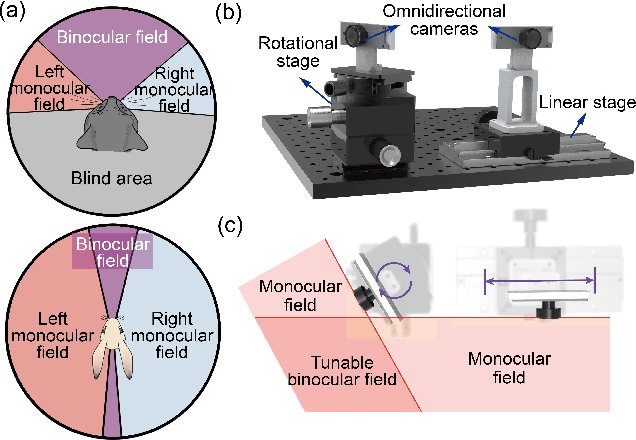
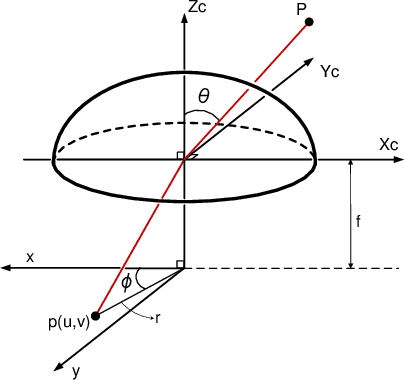
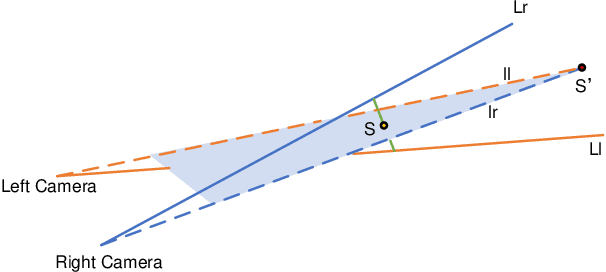
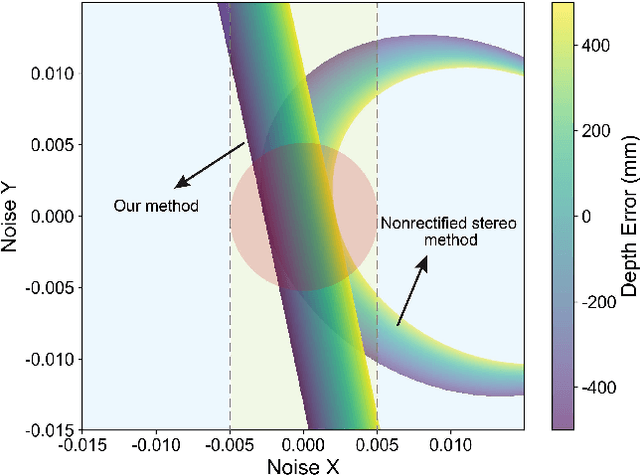
Abstract:This work introduces a novel bio-inspired reconfigurable stereo vision system for robotics, leveraging omnidirectional cameras and a novel algorithm to achieve flexible visual capabilities. Inspired by the adaptive vision of various species, our visual system addresses traditional stereo vision limitations, i.e., immutable camera alignment with narrow fields of view, by introducing a reconfigurable stereo vision system to robotics. Our key innovations include the reconfigurable stereo vision strategy that allows dynamic camera alignment, a robust depth measurement system utilizing a nonrectified geometrical method combined with a deep neural network for feature matching, and a geometrical compensation technique to enhance visual accuracy. Implemented on a metamorphic robot, this vision system demonstrates its great adaptability to various scenarios by switching its configurations of 316{\deg} monocular with 79{\deg} binocular field for fast target seeking and 242{\deg} monocular with 150{\deg} binocular field for detailed close inspection.
Origami-inspired soft twisting actuator
Nov 03, 2021
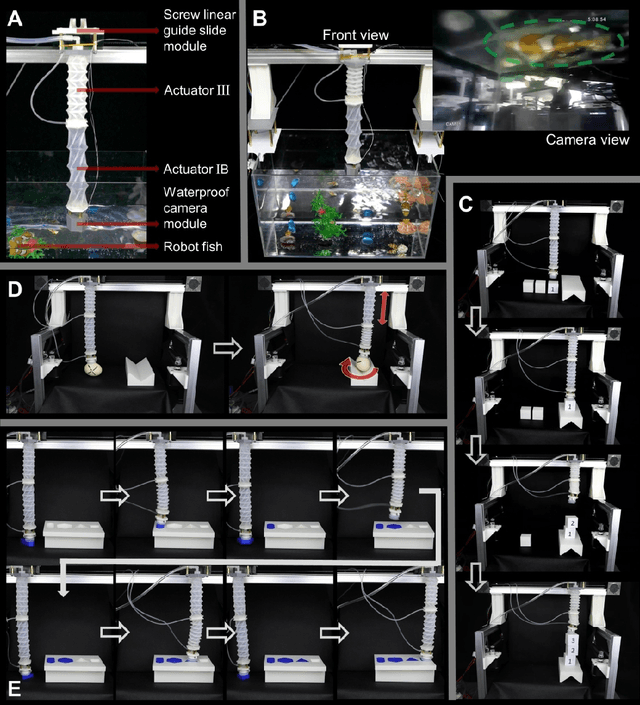
Abstract:Soft actuators have shown great advantages in compliance and morphology matched for manipulation of delicate objects and inspection in a confined space. There is an unmet need for a soft actuator that can provide torsional motion to e.g. enlarge working space and increase degrees of freedom. Towards this goal, we present origami-inspired soft pneumatic actuators (OSPAs) made from silicone. The prototype can output a rotation of more than one revolution (up to 435{\deg}), larger than previous counterparts. We describe the design and fabrication method, build the kinematics models and simulation models, and analyze and optimize the parameters. Finally, we demonstrate the potentially extensive utility of OSPAs through their integration into a gripper capable of simultaneously grasping and lifting fragile or flat objects, a versatile robot arm capable of picking and placing items at the right angle with the twisting actuators, and a soft snake robot capable of changing attitude and directions by torsion of the twisting actuators.
 Add to Chrome
Add to Chrome Add to Firefox
Add to Firefox Add to Edge
Add to Edge